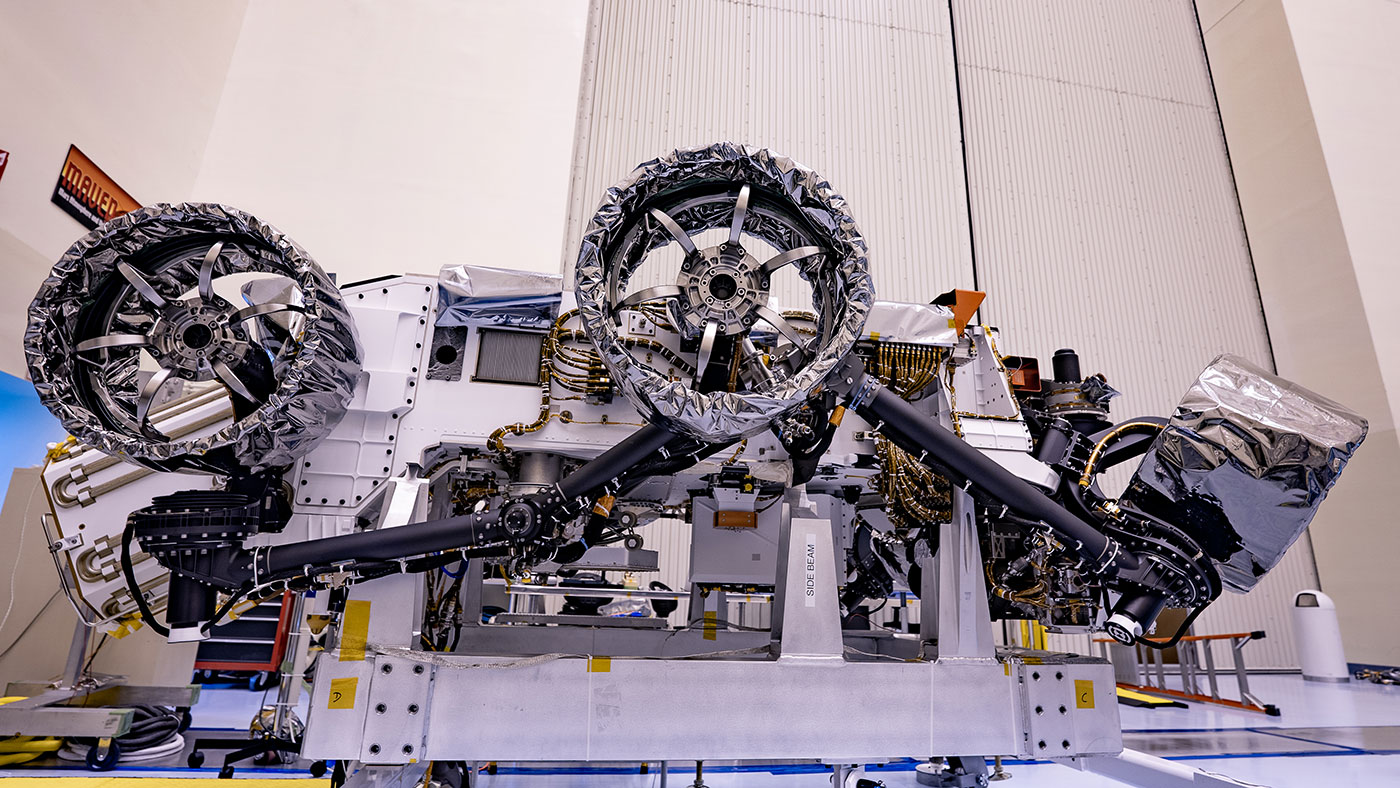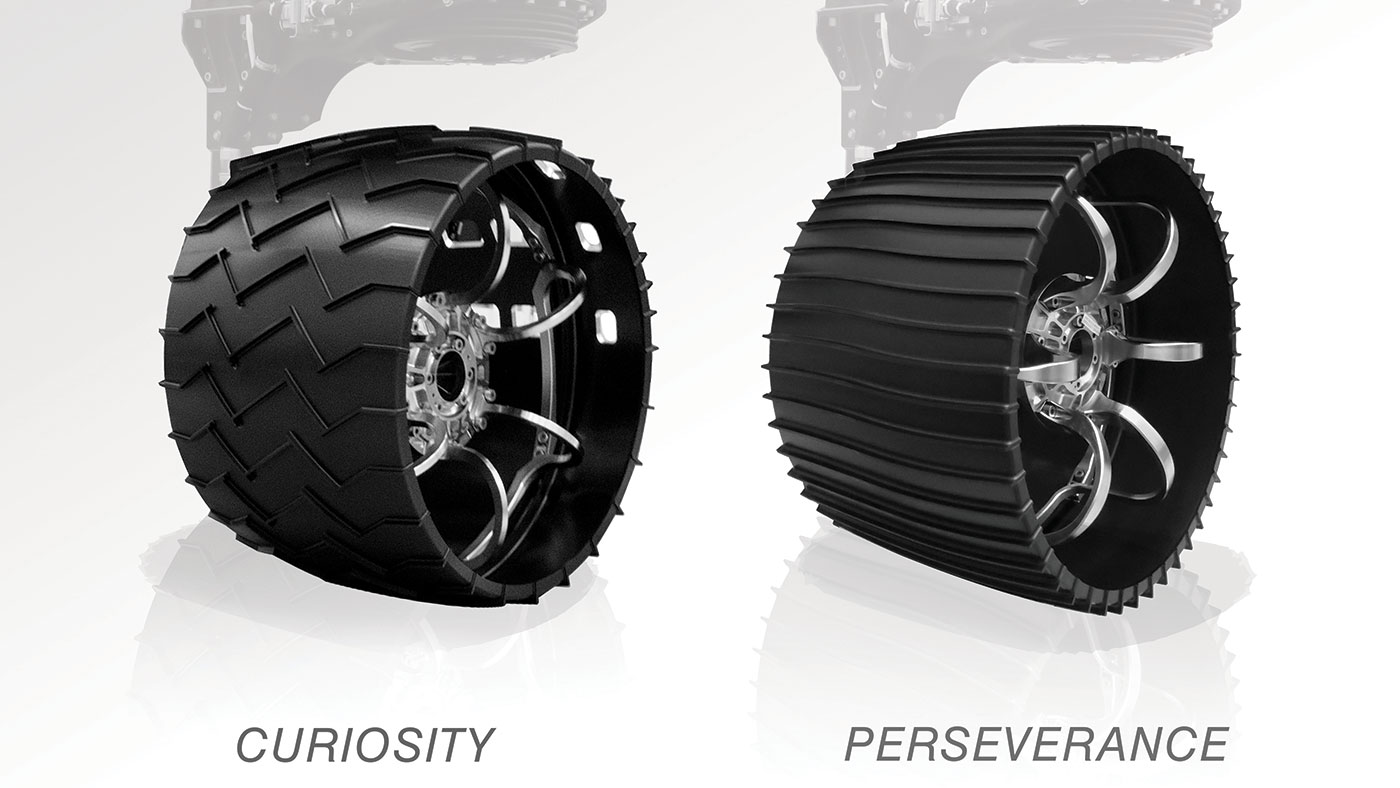
We're just 100 days out from the launch of NASA's next Mars rover.
Perseverance, the car-size robot at the heart of NASA's life-hunting Mars 2020 mission, is scheduled to lift off from Florida's Cape Canaveral Air Force Station during a three-week window that opens on the morning of July 17 — 100 days from today (April 8).
So NASA has been working hard recently to get Perseverance into launch shape. On March 26, for example, technicians finished installing the rover's parachute system. The chute will slow the 2,260-lb. (1,025 kilograms) Perseverance from Mach 1.7 to just 200 mph (320 km/h) in Mars' thin air on landing day, which will be Feb. 18, 2021, no matter when the mission lifts off during this summer's window. (Mach 1.7 is 1.7 times the speed of sound, which is about 767 mph, or 1,235 km/h, at sea level here on Earth.)
More: NASA's Mars 2020 rover Perseverance in pictures
I’m 💯 days away from the opening of my launch period, and my team and I are continuing to persevere. We are taking things step by step, day by day to get to the launch pad. Mark July 17 on your calendars and keep checking in for updates. https://t.co/KfJ3JXDZ67 pic.twitter.com/97LBtyLOkHApril 7, 2020
Perseverance got its six wheels just a few days later, on March 30, NASA officials said. These wheels — the mission's final flight versions, not the test ones that Percy used to take a spin in December 2019 at NASA's Jet Propulsion Laboratory (JPL) in California — are slightly different than the ones aboard Perserverance's predecessor, the Curiosity rover.
"Machined out of a block of flight-grade aluminum and equipped with titanium spokes, each wheel is slightly larger in diameter and narrower than Curiosity's, with skins that are almost a millimeter thicker," NASA officials wrote in a statement on Friday (April 3).
"They also feature new treads, or grousers: In place of Curiosity's 24 chevron-pattern treads are 48 gently curved ones," they wrote.
Get the Space.com Newsletter
Breaking space news, the latest updates on rocket launches, skywatching events and more!
Curiosity's wheels have taken a beating since the rover touched down inside Mars' Gale Crater in August 2012. Indeed, team members began adjusting Curiosity's driving routes early in the mission, which is ongoing, to minimize damage and wear. But testing in the Mars Yard at JPL, which built both Curiosity and Perseverance, suggests that the new rover's wheel design will hold up better while offering traction that's at least as good, NASA officials said.
Perseverance will explore Mars' 28-mile-wide (45 km) Jezero Crater, which harbored a lake and a river delta billions of years ago. The rover will hunt for signs of ancient life on Mars, characterize the region's geology and collect and cache samples for future return to Earth.

Perseverance will perform a variety of other science and technology work in Jezero as well. For example, the rover carries an instrument that will generate oxygen from Mars' carbon-dioxide-dominated atmosphere — gear that could help humanity establish an outpost on the Red Planet someday.
Perseverance also will launch with a small helicopter attached to its belly, which will attempt to pioneer aerial exploration of the Red Planet.
Two life-hunting Mars rovers were originally supposed to get off the ground this summer. But the launch of Rosalind Franklin, part of the European-Russian ExoMars program, has been pushed to 2022 to address parachute problems and other issues. (Mars and Earth align properly for planetary missions just once every 26 months.)
- Mars 2020: The Red Planet's next rover
- Meet 'Perseverance': NASA's Mars 2020 rover has a new name
- Photos: Ancient Mars lake could have supported life
Mike Wall is the author of "Out There" (Grand Central Publishing, 2018; illustrated by Karl Tate), a book about the search for alien life. Follow him on Twitter @michaeldwall. Follow us on Twitter @Spacedotcom or Facebook.
OFFER: Save 45% on 'All About Space' 'How it Works' and 'All About History'!
For a limited time, you can take out a digital subscription to any of our best-selling science magazines for just $2.38 per month, or 45% off the standard price for the first three months.
Join our Space Forums to keep talking space on the latest missions, night sky and more! And if you have a news tip, correction or comment, let us know at: community@space.com.

Michael Wall is a Senior Space Writer with Space.com and joined the team in 2010. He primarily covers exoplanets, spaceflight and military space, but has been known to dabble in the space art beat. His book about the search for alien life, "Out There," was published on Nov. 13, 2018. Before becoming a science writer, Michael worked as a herpetologist and wildlife biologist. He has a Ph.D. in evolutionary biology from the University of Sydney, Australia, a bachelor's degree from the University of Arizona, and a graduate certificate in science writing from the University of California, Santa Cruz. To find out what his latest project is, you can follow Michael on Twitter.










